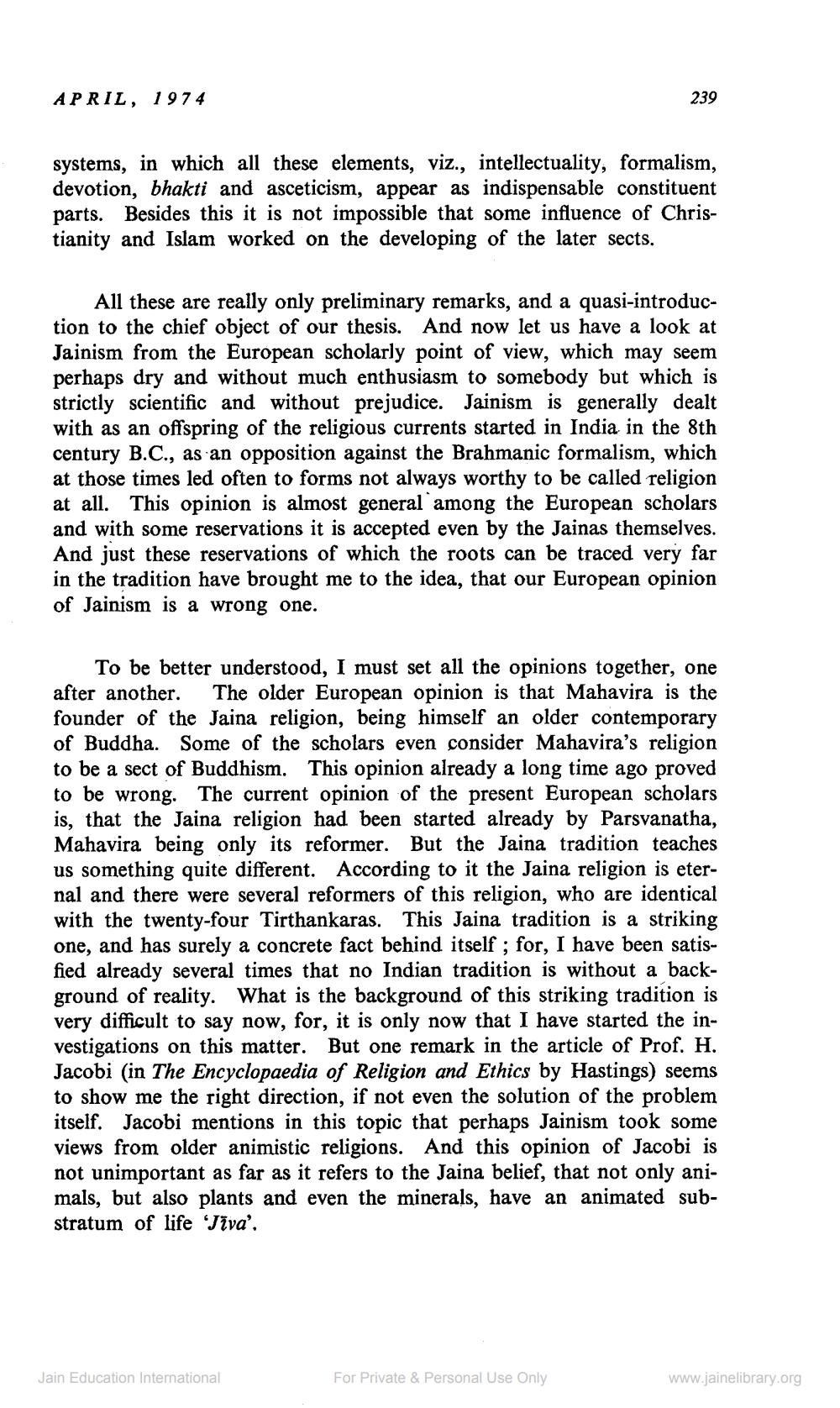________________
APRIL, 1974
239
systems, in which all these elements, viz., intellectuality, formalism, devotion, bhakti and asceticism, appear as indispensable constituent parts. Besides this it is not impossible that some influence of Christianity and Islam worked on the developing of the later sects.
All these are really only preliminary remarks, and a quasi-introduction to the chief object of our thesis. And now let us have a look at Jainism from the European scholarly point of view, which may seem perhaps dry and without much enthusiasm to somebody but which is strictly scientific and without prejudice. Jainism is generally dealt with as an offspring of the religious currents started in India in the 8th century B.C., as an opposition against the Brahmanic formalism, which at those times led often to forms not always worthy to be called religion at all. This opinion is almost general among the European scholars and with some reservations it is accepted even by the Jainas themselves. And just these reservations of which the roots can be traced very far in the tradition have brought me to the idea, that our European opinion of Jainism is a wrong one.
To be better understood, I must set all the opinions together, one
another. The older European opinion is that Mahavira is the founder of the Jaina religion, being himself an older contemporary of Buddha. Some of the scholars even consider Mahavira's religion to be a sect of Buddhism. This opinion already a long time ago proved to be wrong. The current opinion of the present European scholars is, that the Jaina religion had been started already by Parsvanatha, Mahavira being only its reformer. But the Jaina tradition teaches us something quite different. According to it the Jaina religion is eternal and there were several reformers of this religion, who are identical with the twenty-four Tirthankaras. This Jaina tradition is a striking one, and has surely a concrete fact behind itself ; for, I have been satisfied already several times that no Indian tradition is without a background of reality. What is the background of this striking tradition is very difficult to say now, for, it is only now that I have started the investigations on this matter. But one remark in the article of Prof. H. Jacobi (in The Encyclopaedia of Religion and Ethics by Hastings) seems to show me the right direction, if not even the solution of the problem itself. Jacobi mentions in this topic that perhaps Jainism took some views from older animistic religions. And this opinion of Jacobi is not unimportant as far as it refers to the Jaina belief, that not only animals, but also plants and even the minerals, have an animated substratum of life 'Jiva'.
Jain Education International
For Private & Personal Use Only
www.jainelibrary.org




